|
Aspects of Kentish
Local History |
Fawkham and Ash Archaeological Group
(FAAG)
The discovery
and excavation of a Late Iron-Age and Early Roman Farmstead at
Martin's Quarry, Longfield, Kent 1974 and 1979
TQ6084/6842
Fired Clay
- Loom
Weights and
Daub
- Pit
FR
Fragments
of triangular loom weights have been found in both excavations, 1974 and
1979, indicating weaving was being carried out at the farmstead.
Two complete triangular loom weights and one nearly complete loom weight
were found in Pit FR. All three have a small hole for suspending the
loom weight to hold the warp threads tight during weaving. One of these
loom weights (loom weight A), has three holes one at each point of the triangle. (MQ 57
and 62). The fabric contains shell and flint inclusions, sometimes large
pieces of flint. It varies in colour from orange (oxidised) to black
(reduced).
Two complete triangular loom weights and one nearly
complete loom weight were found in Pit FR. All three have a small hole
for suspending the loom weight to hold the warp threads tight during
weaving. One of these loom weights has three holes, one at each point of
the triangle. (MQ 57 and 62). The fabric contains shell and flint
incursions, sometimes large pieces of flint. It varies in colour from
orange (oxidised) to black (reduced).
Press Ctrl
and + together, to keep enlarging enlarge picture on your screen. Press
CTRL and zero together to return to normal size
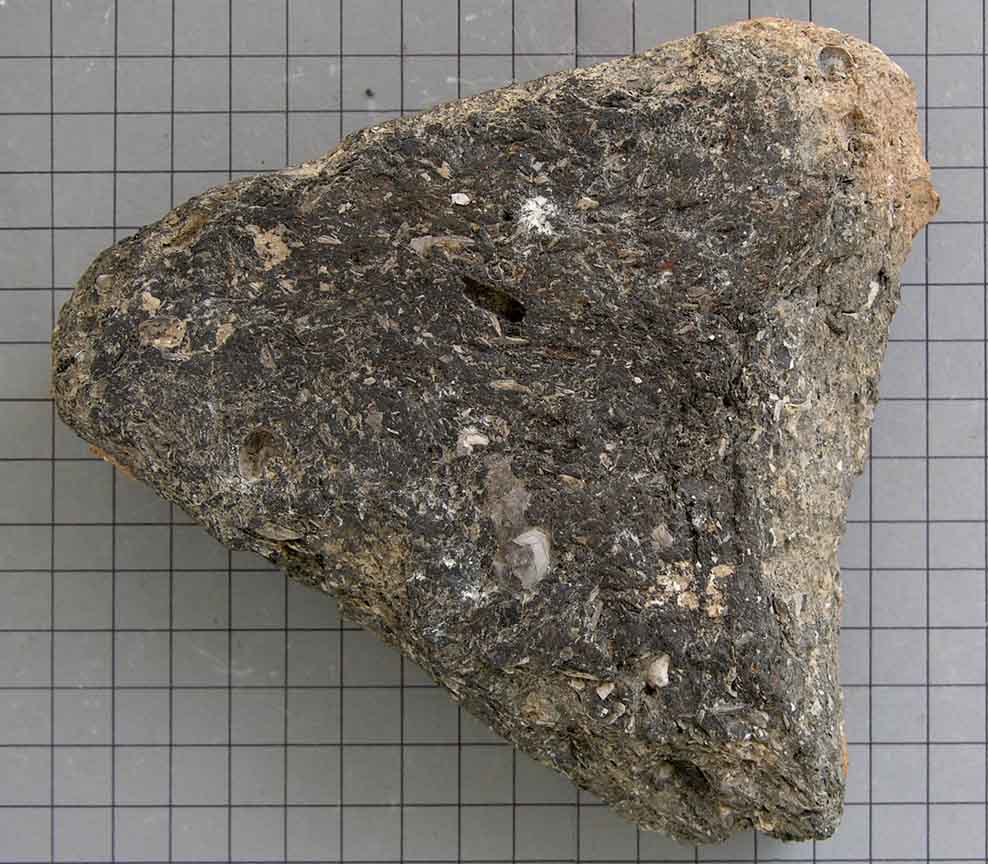
Loom weight A (Background
grid to pictures in cm squares)
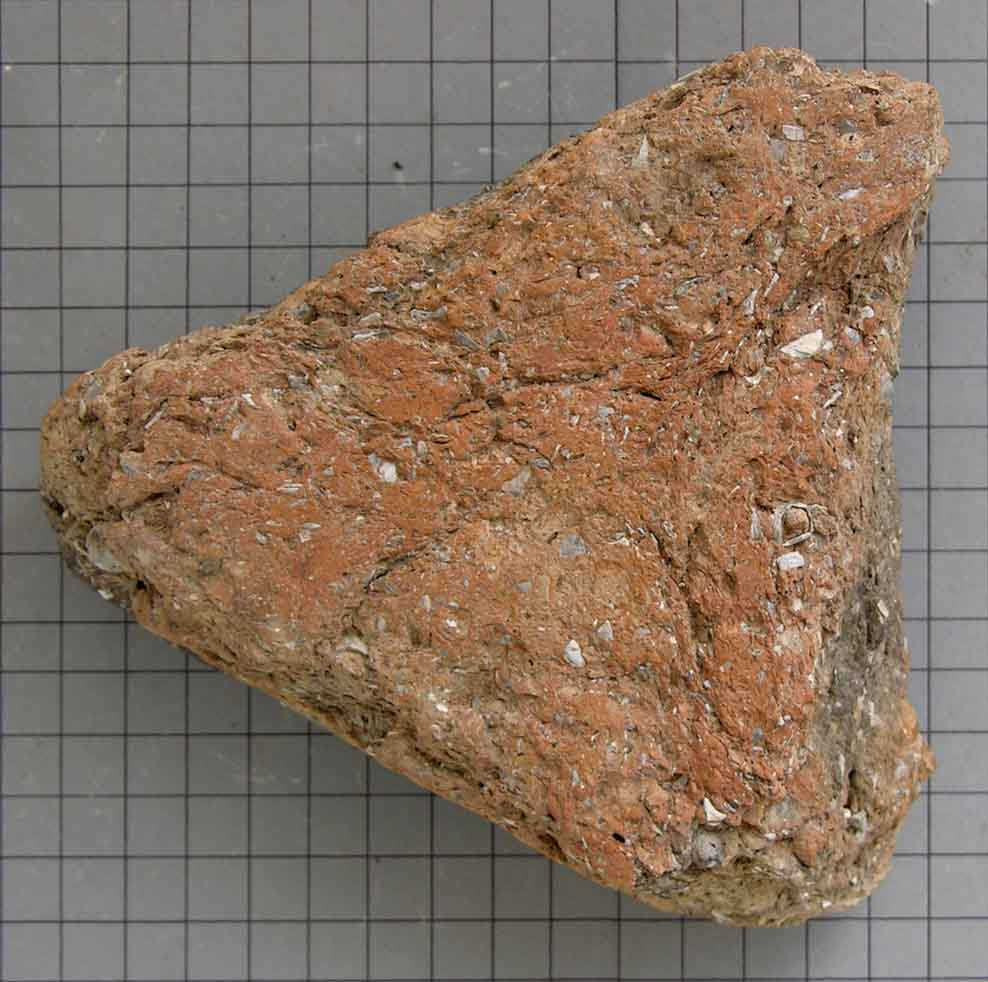
Loom weight A (Background
grid to pictures in cm squares)
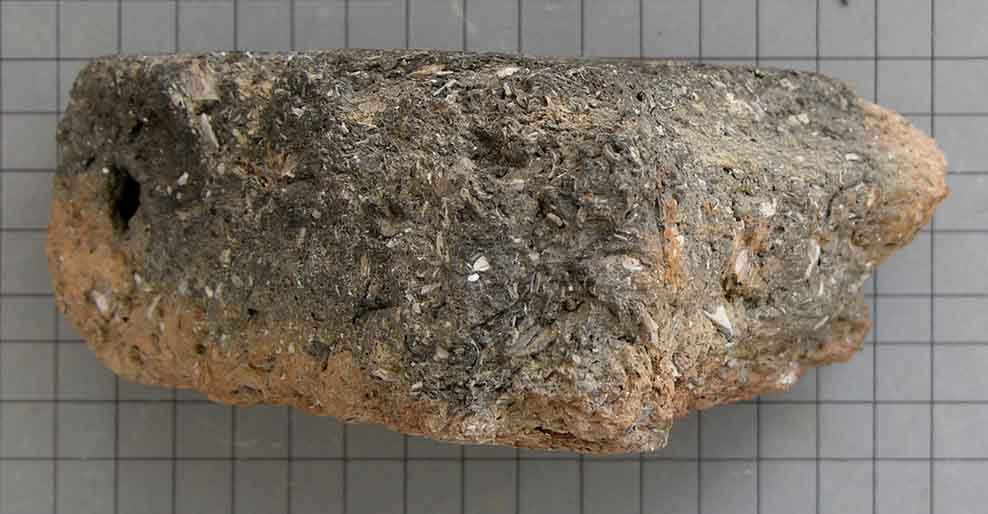
Loom weight A (Background
grid to pictures in cm squares)
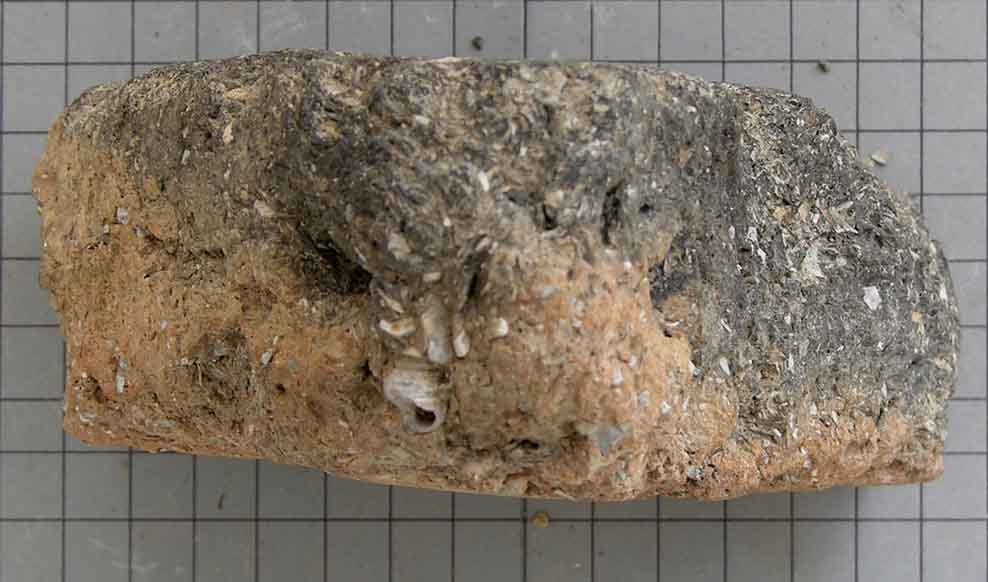
Loom weight A (Background
grid to pictures in cm squares)
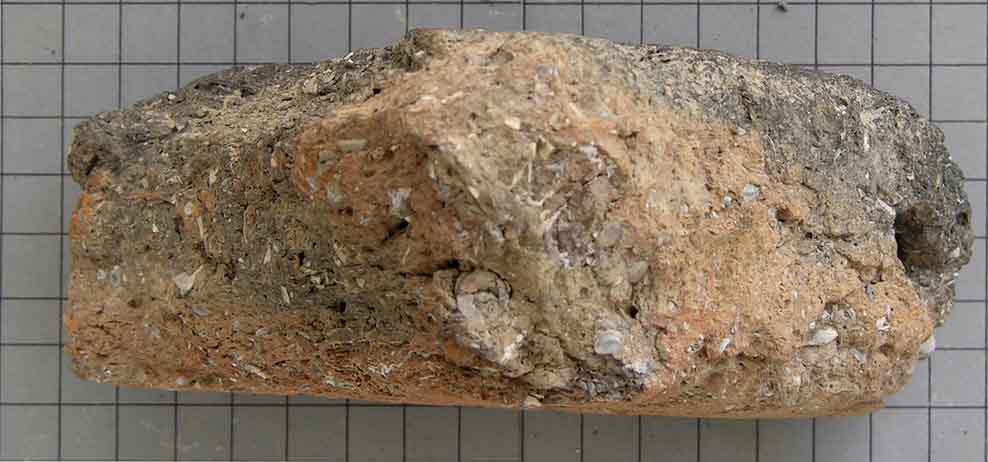
Loom weight A (Background
grid to pictures in cm squares)
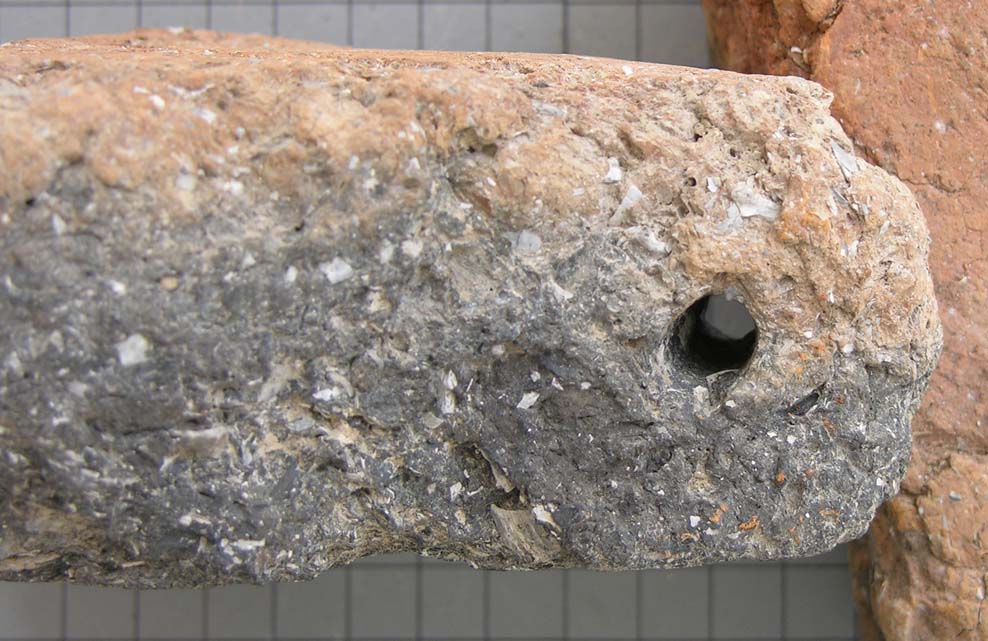
Loom weight A (Background
grid to pictures in cm squares)
Many layers and features contained fragments of daub, some with
roundwood wattle marks like in Pit S.
Pit FR also contained two large pieces of daub (823g and 886g) one with
two smooth sides and the other with a flat surface and both with large
wattle impressions, approx 14mm in diameter. These may have been part of
an oven (MQ57). In addition, Pit FR contained two pieces of daub
co-joining approximately 12cm x 4cm with wattle impressions on one side
and a flat surface on the other face. Both pieces had multiple finger
nail impressions more akin to decoration than simple pressure marks,
forming four distinct lines. (see illustration).
Back to
Contents Page
Return
to Fawkham and Ash Archaeological Group (FAAG) Introduction |